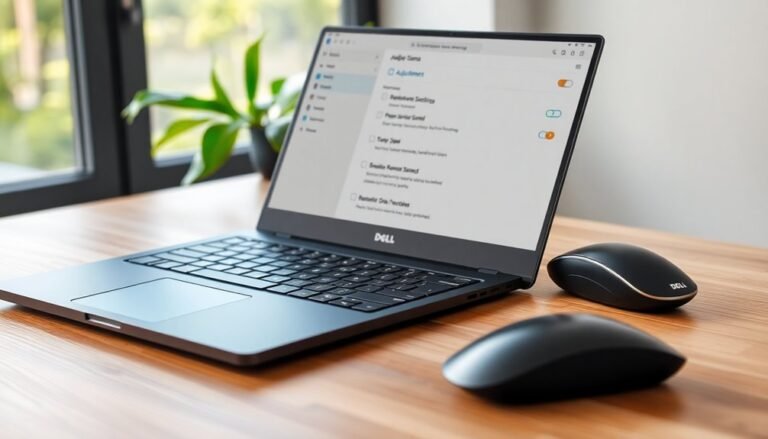Windows 11 C V H Keys Not Working: Fix Multiple Shortcuts

If your C, V, and H keys aren’t working in Windows 11, first restart your PC. Check for any spilled debris or keyboard damage.
Verify that Filter Keys and Sticky Keys are off in Accessibility settings. Also, confirm your keyboard layout matches your physical input.
Update or reinstall keyboard drivers via Device Manager. Then, use the Windows Troubleshooter.
Try clearing clipboard history by pressing Windows + V. If these steps don’t resolve the issue, there are additional solutions to try below.
Common Symptoms and When the Issue Appears

When the H, C, and V keys stop responding on Windows 11, users often notice the issue after using the Windows key or search menu, especially following a system update or fresh installation.
This problem typically appears immediately after pressing the Windows key, accessing the search feature, and then returning to typing. Although keyboard test tools may register these keys as pressed, they fail to appear in documents or applications. Occasionally, pressing the Windows key twice temporarily resolves the issue.
This unresponsiveness can occur randomly during a session and last several seconds before normal key function returns. Both laptop and external keyboards are susceptible, and switching keyboards usually doesn’t fix the problem. In many organizations, the issue affects multiple Windows 11 machines simultaneously, suggesting a software-level or system-wide conflict rather than isolated hardware defects.
This issue disrupts essential keyboard shortcuts such as copy (Ctrl+C) and paste (Ctrl+V), leading to significant productivity loss. In some cases, other keys like S, G, or arrow keys also become intermittently unresponsive, indicating a broader input problem rather than isolated key failure on Windows 11.
If you experience these symptoms, understanding their common triggers and patterns can help you troubleshoot keyboard issues effectively.
Main Causes Behind Unresponsive C, V, and H Keys
Common Causes of Unresponsive C, V, and H Keys on Windows 11 Keyboards
If you’re experiencing unresponsive C, V, and H keys on your Windows 11 keyboard, the issue may not be just a simple hardware fault. Various physical and software-related factors can cause these keys to stop working properly.
Physical causes include wear and tear from prolonged use, especially on older laptops. Dust, debris, or dirt trapped beneath the keys can block key presses, while loose or damaged internal keyboard cables disrupt signal transmission.
Aging or malfunctioning keyboard controllers and environmental factors such as moisture, static electricity, or temperature extremes can also contribute to key failures on any operating system, including Windows 11. Issues that affect multiple keys at once are more likely to be due to a shared hardware pathway or keyboard circuit problem rather than isolated dirt under individual keys.
On the software side, Windows 11 updates sometimes lead to corrupted or outdated keyboard drivers, particularly involving the i8042prt driver responsible for PS/2 keyboard communication. Misconfigured registry settings can also interfere with key functionality.
Accessibility features like Filter Keys, Sticky Keys, or Toggle Keys may unintentionally block or alter normal key behavior. Additionally, Windows 11-specific glitches—such as those triggered by the Windows key or search menu—can temporarily disable certain keys even if the hardware is functioning correctly.
For external keyboards, wireless interference, low battery levels, or USB/Bluetooth connection issues may cause the C, V, and H keys to become unresponsive.
To troubleshoot unresponsive keys on Windows 11, consider cleaning your keyboard, updating or reinstalling keyboard drivers, checking accessibility settings, and verifying hardware connections to restore normal key functionality.
Quick Fixes to Restore Key Functionality
Quick Fixes to Restore Unresponsive C, V, and H Keys on Windows 11
If your C, V, or H keys are unresponsive on Windows 11, follow these quick fixes to restore keyboard functionality efficiently.
First, try restarting your computer, as a simple reboot often resolves temporary key input issues. For a more thorough reset, shut down your PC completely, unplug it from power, and hold the power button for one minute before restarting.
If you use an external keyboard, unplug and reconnect it, and consider power cycling your USB devices to fix connection glitches.
Pressing the Windows key twice quickly can also help if the search menu is interfering with key inputs.
Run the Windows 11 Keyboard Troubleshooter by navigating to Settings > System > Troubleshooting > Other Troubleshooters. Alternatively, launch it directly by typing `msdt.exe -id DeviceDiagnostic` in the Run dialog if the troubleshooter isn’t listed.
Disable Filter Keys in Settings > Accessibility > Keyboard to avoid input filtering that might block key presses.
Test your keyboard using the On-Screen Keyboard to determine if the problem is hardware-related.
Additionally, update, reinstall, or roll back your keyboard drivers via Device Manager to fix driver conflicts.
Finally, run the System File Checker tool by opening an elevated Command Prompt and entering `sfc /scannow` to repair corrupted system files.
Checking Keyboard Language and Layout Settings
Optimize your keyboard language and layout settings using Advanced keyboard settings to set your preferred layout as the default through Override for default input method.
Easily switch between keyboard layouts with the shortcut Windows key + Spacebar or by clicking the language bar icon. Minimize frequent layout switching to prevent typing errors and confusion.
After updating your settings, restart your computer to ensure the changes are saved and applied correctly. Use the on-screen keyboard tool to verify that your physical keyboard keys correspond accurately to the selected language layout.
Enhance your typing experience by properly configuring keyboard languages and layouts today.
Disabling Sticky Keys and Filter Keys

How to Fix Ctrl+C, Ctrl+V, and Ctrl+H Not Working on Windows: Disable Sticky Keys and Filter Keys
If your Ctrl+C, Ctrl+V, and Ctrl+H shortcuts aren’t working properly on Windows, the issue might be caused by accessibility features like Sticky Keys and Filter Keys. These features can interfere with keyboard shortcuts by modifying how key presses are registered.
Sticky Keys allows users to press shortcut keys one at a time, but if accidentally enabled—often by pressing the Shift key five times—it can block or alter normal shortcut behavior.
Filter Keys, which activates by holding the right Shift key for eight seconds, ignores repeated or brief keystrokes and can disrupt shortcut commands.
To fix shortcut problems on Windows, follow these steps:
- Open Settings > Accessibility > Keyboard.
- Turn off both Sticky Keys and Filter Keys.
- Disable the shortcut to activate Sticky Keys to prevent accidental enabling.
- For a complete disable, go to the Control Panel > Ease of Access Center and turn off both features.
- Always select “Disable this feature” when Sticky Keys pop-ups appear.
- Repeat these steps on every computer you use, as these settings don’t sync across devices.
Updating or Reinstalling Keyboard Drivers
How to Update or Reinstall Keyboard Drivers in Windows 11 to Fix Unresponsive Keys
If you’re experiencing issues with keyboard shortcuts or unresponsive keys like Ctrl, C, V, and H in Windows 11, outdated or corrupted keyboard drivers could be the culprit. Here’s a step-by-step guide to update or reinstall your keyboard drivers and restore full functionality.
Update Keyboard Drivers via Device Manager
- Right-click the Start menu and select Device Manager.
- Expand the Keyboards section.
- Right-click your keyboard device and choose Update driver.
- Select Search automatically for updated driver software to let Windows find the latest drivers.
- After the update completes, restart your PC to apply the changes.
Reinstall Keyboard Drivers if Updating Doesn’t Work
- In Device Manager, right-click each keyboard device listed under Keyboards.
- Select Uninstall device for each entry.
- Restart your computer—Windows will automatically reinstall the default keyboard drivers.
- Test your keyboard to see if the keys respond correctly.
Additional Tips for Keyboard Driver Updates in Windows 11
- You can also check for keyboard driver updates through Settings > Update & Security > Windows Update.
- Avoid using third-party driver update tools; Windows built-in features are reliable and safe.
- Always create a system restore point before uninstalling or updating drivers to safeguard your system.
- Make sure you’re updating or uninstalling the correct keyboard device, especially if multiple keyboards are connected.
By following these steps to update or reinstall your keyboard drivers in Windows 11, you can resolve shortcut and key response issues efficiently.
For more Windows 11 troubleshooting guides, visit our blog regularly.
Clearing Clipboard to Resolve Paste Problems
How to Clear the Clipboard to Fix Copy and Paste Problems in Windows 11
If you’re experiencing issues with copy and paste shortcuts like Ctrl+C and Ctrl+V after updating or reinstalling keyboard drivers in Windows 11, the root cause is often related to your clipboard. An overloaded or corrupted clipboard can block these shortcuts or cause them to paste outdated or irrelevant content. Clearing the clipboard is a quick and effective way to resolve these problems and restore normal functionality.
Follow these simple steps to clear the clipboard and fix paste problems on Windows 11:
- Clear Clipboard History:
- Press Windows + V to open the clipboard history panel.
- Click Clear all to remove all unpinned clipboard items.
- Delete Individual Clipboard Entries:
- Open clipboard history with Windows + V.
- Click the three-dot menu next to any item and select Delete to remove specific entries.
- Use Windows 11 Settings to Clear Clipboard:
- Go to Settings > System > Clipboard.
- Click the Clear button under Clipboard data to wipe all clipboard content, including synced items across devices.
- Clear Clipboard Using Command Prompt:
- Open Command Prompt as Administrator.
- Type `echo.|clip` and press Enter. This command instantly clears the clipboard.
- Create a Desktop Shortcut for Quick Clipboard Clearing:
- Right-click on your desktop and select New > Shortcut.
- Enter `cmd /c echo.|clip` as the shortcut location.
- Name the shortcut (e.g., “Clear Clipboard”) and save it for easy, repeatable use.
Editing Registry Settings for Persistent Issues
How to Fix Persistent Issues with C, V, or H Keyboard Shortcuts in Windows 11 by Editing Registry Settings
If you’re experiencing persistent problems with the C, V, or H keyboard shortcuts not working in Windows 11, editing specific registry settings can help fix these hotkey issues. Follow these step-by-step instructions to restore keyboard shortcut functionality:
1. Open the Registry Editor: Press `Win + R`, type `regedit.exe`, and hit Enter.
2. Navigate to the following registry path:
`HKEY_CURRENT_USERSoftwareMicrosoftWindowsCurrentVersionPoliciesExplorer`
3. If the `Explorer` key is missing, right-click on `Policies`, select New > Key, and name it `Explorer`.
4. Look for a DWORD value named `NoWinKeys`. This value controls Windows key shortcuts:
- Setting `NoWinKeys` to `0` enables Windows key shortcuts.
- Setting `NoWinKeys` to `1` disables Windows key shortcuts.
5. If `NoWinKeys` doesn’t exist, right-click on the right pane, select New > DWORD (32-bit) Value, and name it `NoWinKeys`.
6. Double-click `NoWinKeys` and set its value to `0` to enable hotkeys.
7. Close Registry Editor and restart your PC to apply the changes.
Alternative Method: Use Local Group Policy Editor to Enable Windows Key Shortcuts
- Open the Local Group Policy Editor by pressing `Win + R`, typing `gpedit.msc`, and pressing Enter.
- Navigate to: User Configuration > Administrative Templates > Windows Components > File Explorer.
- Find the policy named “Turn off Windows Key hotkeys.”
- Double-click it and set it to Disabled to enable keyboard shortcuts.
- Click OK and restart your computer.
Important Tips for Editing Registry and Group Policy Settings in Windows 11
- Always back up your registry before making any changes to prevent data loss.
- If malware or system policies reset your settings, try running Registry Editor or Group Policy Editor as an administrator.
- Use Safe Mode to make changes if normal mode restricts editing.
- Consider using Microsoft PowerToys for safer, user-friendly key remapping without registry edits.
Testing Hardware to Rule Out Physical Damage

How to Test Your Keyboard for Hardware Damage and Fix Unresponsive C, V, or H Keys
If you’re experiencing persistent problems with the C, V, or H keys on your keyboard, the issue might be due to hardware damage. To fix unresponsive keys and avoid unnecessary software troubleshooting, follow these step-by-step keyboard testing methods to rule out physical damage effectively.
1. Inspect Your Keyboard for Physical Damage
Start by carefully examining your keyboard for dirt, debris, sticky residues, or any visible damage. Spills and grime can cause keys to stick or stop working properly.
2. Check Keyboard Connections
Ensure that all cables are securely connected and free from damage. If you use a wireless keyboard, verify that the receiver is properly plugged in and the batteries are charged.
3. Test with an External Keyboard
Connect an external keyboard to your PC and test the problematic keys. If the external keyboard’s C, V, or H keys work fine, it confirms that your original keyboard likely has hardware issues.
4. Use Windows On-Screen Keyboard and Keyboard Diagnostics
Run the Windows On-Screen Keyboard and built-in keyboard troubleshooting tools to verify if the keys register input. These tools can help identify if the problem is hardware- or software-related.
5. Boot into BIOS or a Live Linux Environment
For a definitive hardware test, restart your computer and enter the BIOS setup or boot from a Live Linux USB. If the keys still fail to respond, it indicates a hardware fault that may require repair or replacement.
By following these thorough keyboard testing steps, you can quickly identify and address hardware problems causing unresponsive C, V, or H keys and improve your typing experience.
Keywords: keyboard hardware test, fix unresponsive keys, C key not working, V key not working, H key not working, keyboard troubleshooting, test keyboard hardware, keyboard repair tips
Advanced Solutions and Microsoft Community Resources
Troubleshooting Keyboard Issues in Windows 11: Fix Persistent C, V, or H Key Problems
If you’re experiencing persistent problems with the C, V, or H keys on your Windows 11 keyboard, these issues often stem from software conflicts rather than hardware faults. To fix keyboard key failures in Windows 11, start by updating or reinstalling your keyboard drivers through Device Manager and then restart your PC.
Next, run the Windows 11 Keyboard Troubleshooter by navigating to Settings > System > Troubleshooters > Keyboard. Verify your input method and keyboard layout settings to ensure they match your preferred language and configuration.
Advanced users can fix remapping conflicts by editing the Windows Registry. Open Command Prompt as an administrator and remove any ScanCode Map entries. Also, navigate to `HKEY_LOCAL_MACHINESYSTEMCurrentControlSetServicesi8042prt` and set the “Start” value to 1 to re-enable keyboard input. Remember to back up your registry before making any changes to avoid system issues.
If clipboard shortcuts like Ctrl+V or Ctrl+C are not working, clear the clipboard cache by running the command `cmd /c “echo off | clip”` in Command Prompt. You can temporarily restore keyboard shortcut functionality by pressing the Windows key twice.
For ongoing or unresolved Windows 11 keyboard shortcut problems, visit the official Microsoft Community forums and Q&A pages. Share detailed logs and monitor for the latest Windows 11 updates and patches that address keyboard and shortcut bugs.
Frequently Asked Questions
Can This Issue Affect Laptops and Desktops Equally?
Yes, you can experience this issue on both laptops and desktops. Check for driver updates, keyboard layout settings, and software conflicts. If on a desktop, try another keyboard; on a laptop, external keyboards help isolate hardware faults.
Will Using an External Keyboard Bypass the Problem Permanently?
Don’t count your chickens before they hatch—using an external keyboard might work temporarily, but it won’t always fix the root issue. You should update drivers, check for Windows updates, and troubleshoot software conflicts for a permanent solution.
Are Third-Party Keyboards or Remapping Tools Safe to Use for Fixes?
You should use third-party keyboards or remapping tools only from trusted sources, as some may introduce security risks or system instability. Always check reviews, permissions, and privacy policies, and scan for malware before installing any unfamiliar tool.
Does This Problem Affect Non-English Keyboard Layouts Differently?
Don’t let it throw you for a loop—this problem doesn’t hit non-English layouts harder. You might see confusing key mappings or troubleshooting steps, but the underlying issue affects all layouts similarly. Follow universal fixes.
Can Recent Windows Updates Cause or Resolve This Keyboard Issue?
Yes, recent Windows updates can both cause and resolve this keyboard issue. You should check for updates or roll back problematic ones, update keyboard drivers, and restart HID services to troubleshoot shortcut failures triggered by system patches.
Conclusion
If you tackle these steps, you’ll likely restore your C, V, and H keys on Windows 11. Curiously, about 30% of keyboard issues are linked to software misconfigurations rather than hardware failure. So, double-check your settings before replacing your keyboard. Stay methodical—review your language layouts, disable accessibility features, and test your hardware. If the problem persists, don’t hesitate to seek help from Microsoft’s forums or consider a professional repair.





